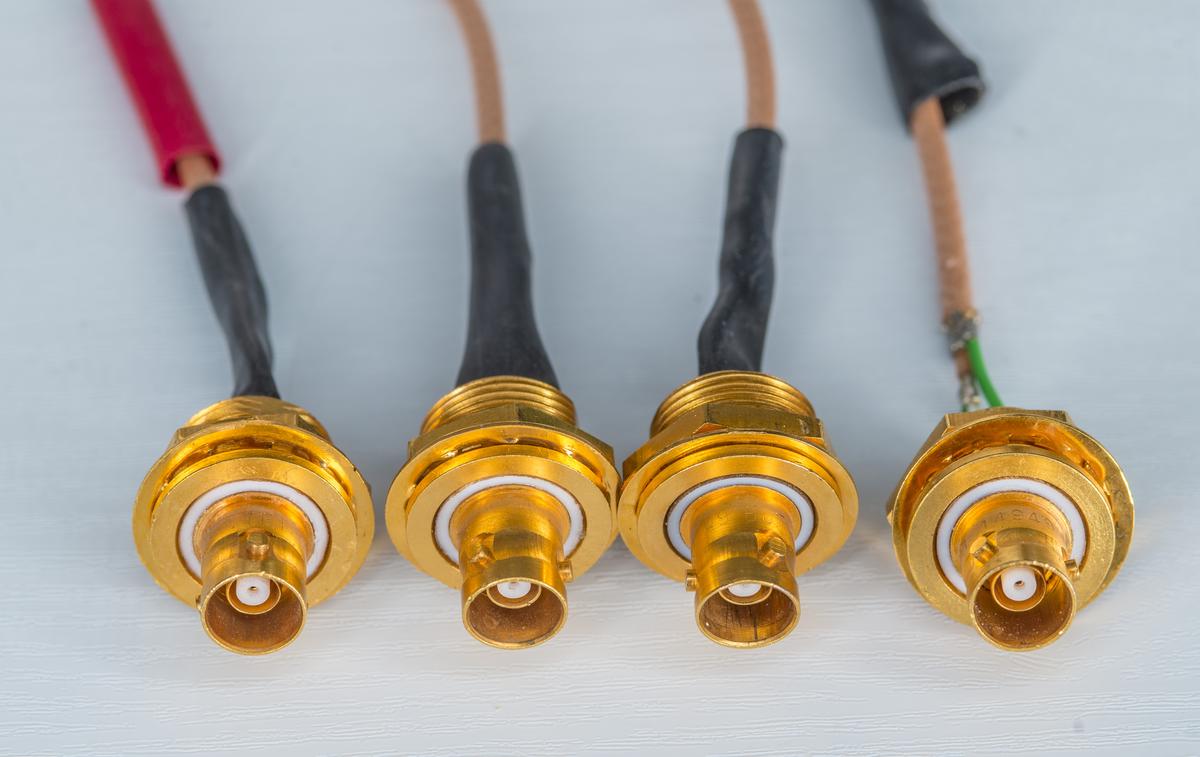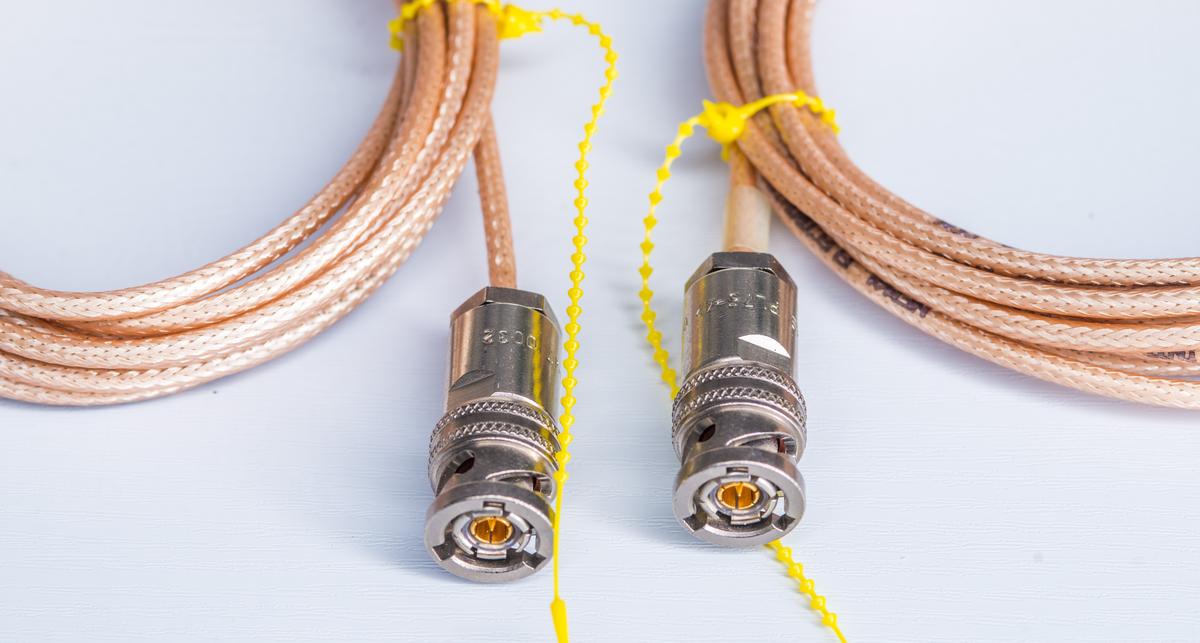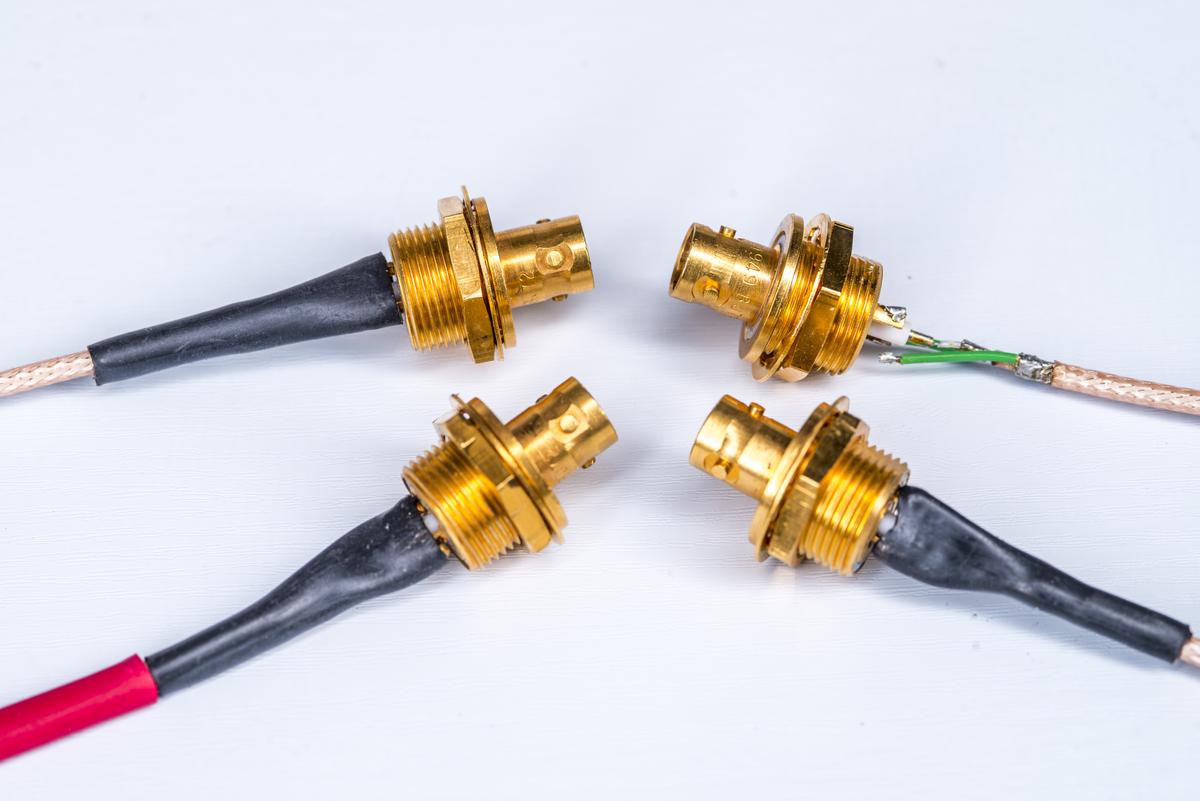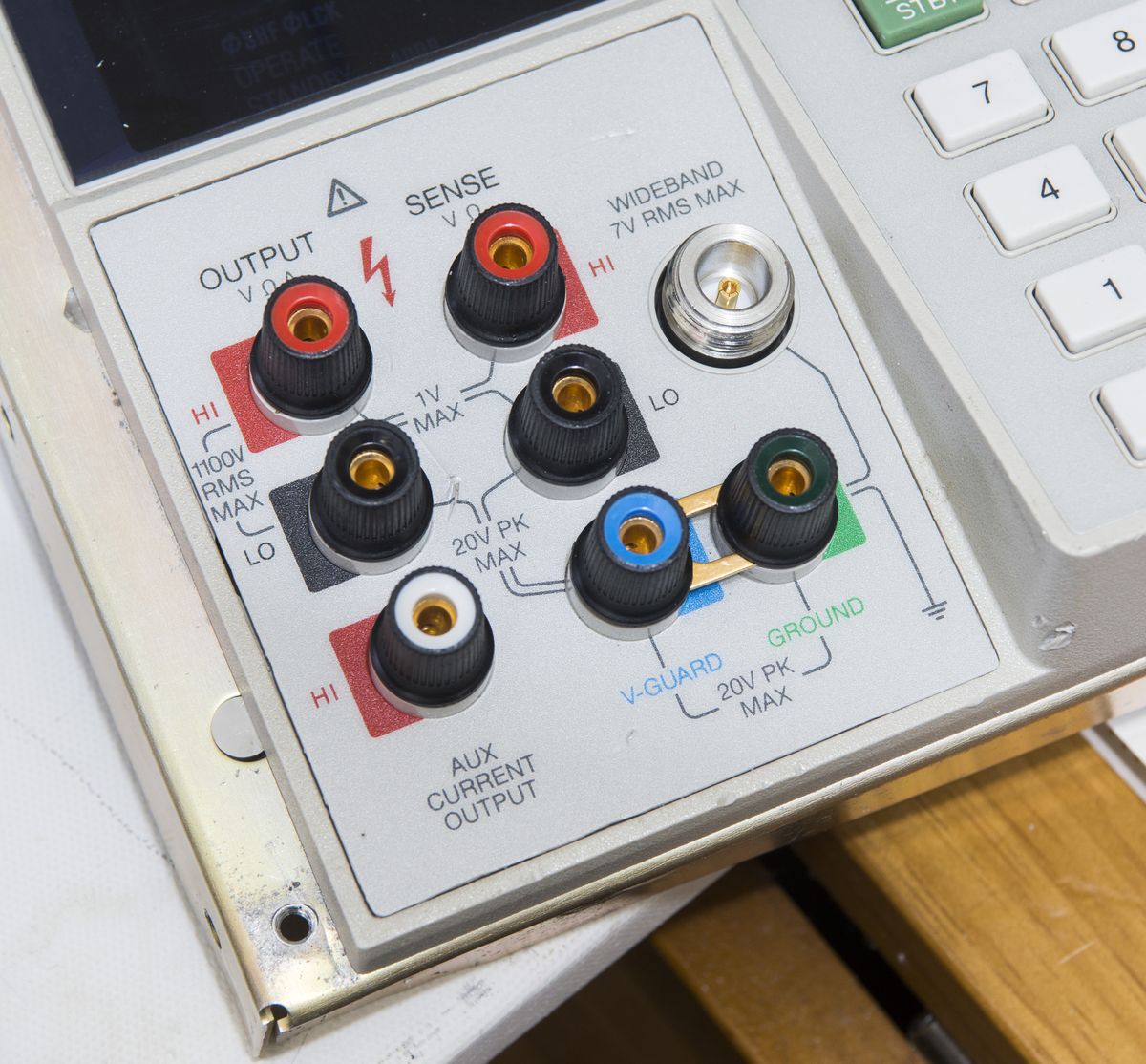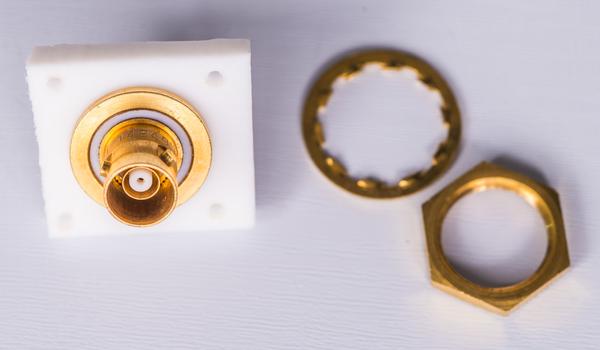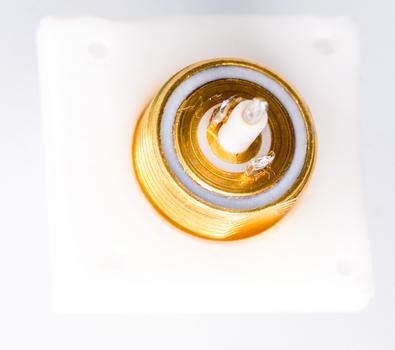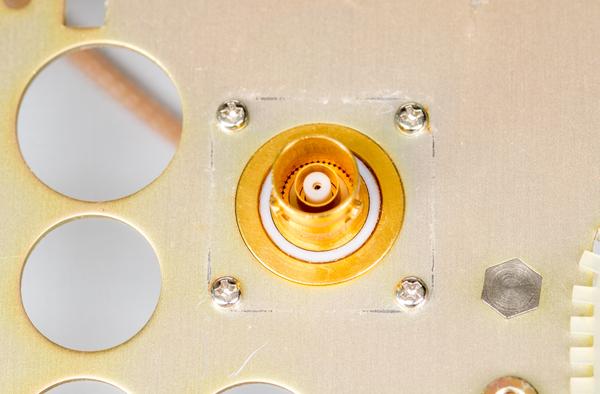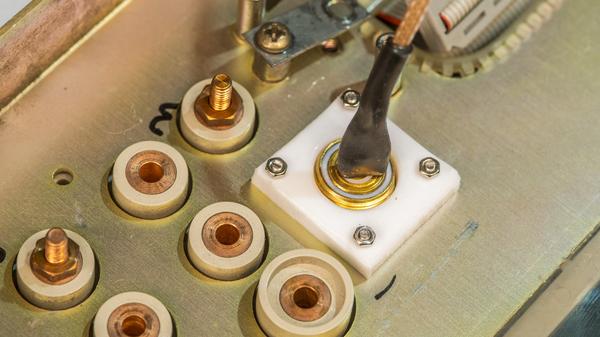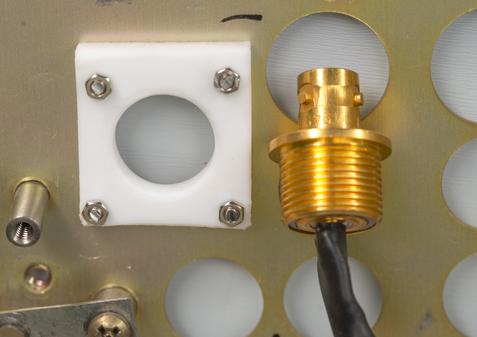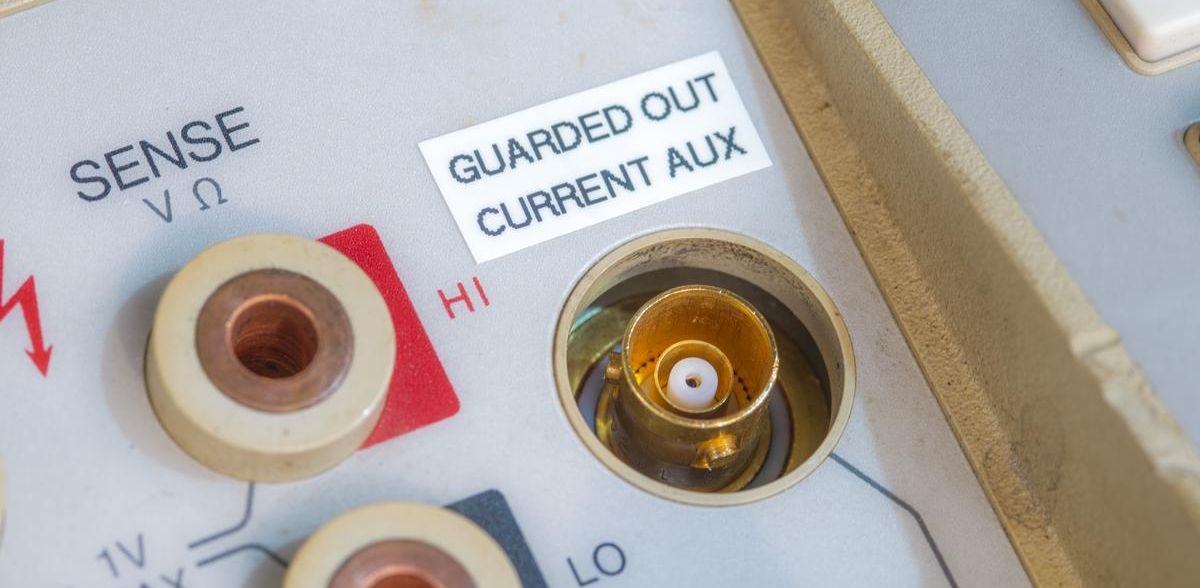I’ve been toying with idea of adding properly active guarded current output to my second Fluke 5720A calibrator. By first expectation you see “GUARD” blue post on the front panel of 5700/5720A instruments, so sourcing currents should be already guarded right? But no, current output active guarding ONLY when calibrator hardware configured with REAR output option. Which means cable with all calibrator output terminals connected to rear ports, and GUARD post there is violet color, providing active current-only guarding.
To keep using input at the calibrator front panel but add guarding to current output I have decided to replace unused Wide-band Type N connector on the front panel of this 5720A with fancy triaxial connector for just AUX current output terminal. This can be helpful to drive long cables and perform sensitive measurements at fraction of the lowest 220 µA scale. Perhaps in future I could even make current attenuation module to provide additional ranges for lower currents?
Triaxial connectors look like and work like typical BNC, but instead of just two conductors (signal center wire and ground/shield) they have center signal wire and two isolated shields. Inner shield is supplied with same voltage level as sensitive center conductor, thus removing parasitic capacitance and insulation leakage effects from signal wire. Outer shield is used for ground or return path, just like in normal coaxial. Triaxial connectors and BNC connectors have same size but mechanically NOT compatible. To help with matching connectors, typical modern triaxial port have 3 lug key, while standard BNC has 2 lug key only.
Where to get triax connector? One can buy from Digikey but I wanted something fancier to match upper class league of Fluke 5720A calibrator, so went ahead with this eBay deal from Chicago, IL .To my amazement seller actually recognized who I was and heard of xDevs.com project before, so he got me some extra connectors and cables for this project as well. And if you think $25 USD per one connector is expensive, specialized connectors like these triaxial can often cost hundreds of dollars. Part of the reason is due to limited supply and niche applications for these plus much more little components and connector parts manufactured out of PTFE with precision metal work. Enough texting, let’s see what arrived few days after order:
Triaxial connectors as received. I expected to get triax ports with coaxial wire (often internal chassis ports connect shield of coax wire to guard only), but even wire is actual triaxial type. It is regular type triax, not low noise version however, which has graphite conductive layer between signal wire PTFE insulation and guard shield braid.
Seller also included pair of triax cables. They are nice cables, but not low-noise and rated for impedance 75 Ω, typical for Trompeter stuff for datavideo interfaces. Cable have printed marking “NEMAL ELECTRONICS INTL P/N 1729 TRIAX”. This suggests that manufacturer is NEMAL who specialize on audio/video equipment. Sadly, P/N 1729 search on their site did not reveal anything useful, perhaps it was a custom product for particular customer.
Here we can also see that center conductor soldered directly to triaxial pin, while guard and outer shield soldered with short green insulated jumpers. Whole thing covered with silicone-padded thermally shrink tubing. I have measured leakage of both triaxial cable wire and triaxial connector for few hours:
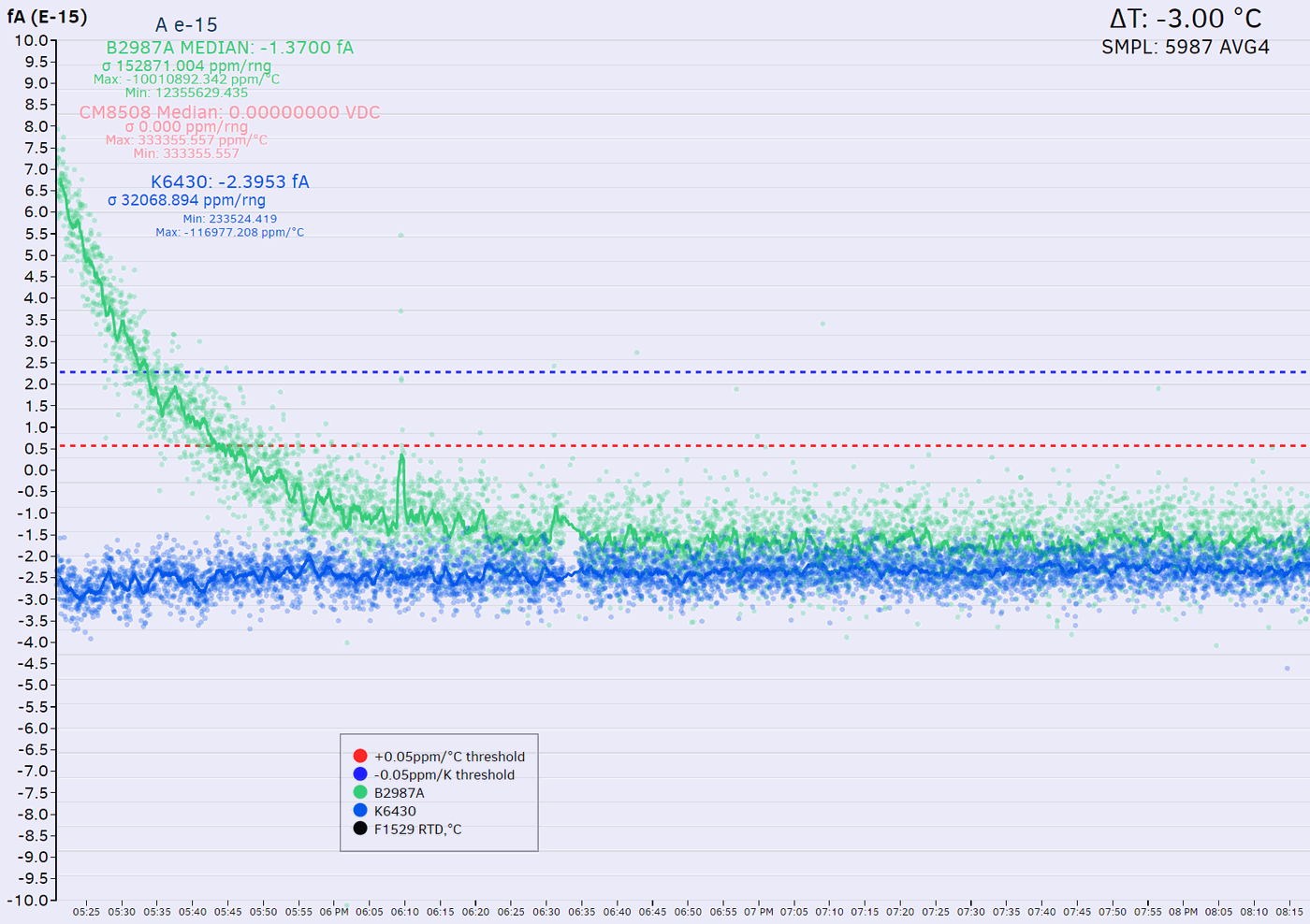
Keithley 6430 with preamp used to bias cable at 20V and measure leakage current at 2 pA range.
Keysight B2987A used to bias connector with short piece of triax wire at 20 VDC, and measure leakage currents at lowest 2 pA range.
Both plots show settled current levels <3 femtoampere or <0.003 picoamperes, which at 20V applied translate into >6.6 PΩ resistance. It’s crazy high compared to nominal output levels of 5720A current output ranges. Even zero noise of calibrator is specified ±6 nA, which is way higher than this triaxial cable/connector leakage effects.
Here’s close up on Fluke 5720A front panel with above mentioned wideband Type N connector. My second calibrator does not have wideband module option and I have no plans to add it (my first 5720A has WBV option already) so adding triax guarded current output could be helpful for sourcing precision currents below 220 µA which is lowest current range that 5720A offers.
To replace N connector in Fluke 5720A front panel which have standard N-type to SMA flange connector, I’ve made little adapter out of PTFE 5mm thick sheet, with drilled hole for connector and mount M2 bolts.
This whole assembly will replace original Type N connector and will have triaxial wire going from connector directly to the AUX current source on A7 board, including active guard.
Gold-plated connector with actual triple PTFE insulation fits front panel metal work PERFECTLY. Joy to eyes, and beauty forever. One little down-side is thickness of used PTFE sheet. It’s a bit too thick to be mounted on front face of the metal frame, leaving connector too deep inside the opening in plastic.
I could improve that before final installation by replacing PTFE sheet with thinner type.
Final step would be making nice label and doing actual tests with now actively guarded low currents output from this modified Fluke 5720A.
To be updated…
Modified: July 6, 2021, 2:56 a.m.

